About the blog: Saspol Caves are one of the finest examples of Buddhist art found in Sham Valley of Ladakh region. Located in Saspol village about 60 km from Leh, the Saspol Cave temples contain beautiful and vibrant wall paintings. We had visited Saspol Cave in our last visit to Ladakh and found the place to be absolutely fascinating. Read this travel blog to know about our experiences at the Saspol Caves. Also, this blog is picture heavy and I request you to have a look at the photographs!
Where are the caves? I was standing somewhere on the Srinagar-Leh Road gazing up towards the Saspol Caves. The caves are located on top of a hill that seemed to be quite steep. Also, I could not see any clear path leading to the caves. The only thing I could see was a gravelly and narrow trail with loose stones strewn around.

To be honest, I was not in the mood for any adventure at that moment; reason being I was hungry! We had a very early breakfast in Leh, but started late. We had gone to explore Mangue Monastery, another hidden gem in Sham Valley of Ladakh. Although the breeze was cool, the sun was right over our heads and I had forgotten to get my cap with me. All the good mood from exploring Mangue Monastery seemed to gradually vanish.
But before I could get any more discouraged to climb the hill, both Agni and I decided to buck up and explore the Saspol caves. After all, who knows what these caves were hiding. It might make me chipper after we get to see what treasures these caves hold.
Where are the Saspol Caves located?

The Saspol Caves are located in the village sharing the name. Saspol is located about 60 km northwest of Leh town on the northern bank of the Indus River. The Alchi Monastery is located just on the other side of the Indus River and can be seen from the hilltop.
These cave temples are situated in a nearly vertical ridge. The cliff itself has several caves. There are also ruins of a castle in the nearby hill. The imposing ruins also speak volume about the importance of these cave temples.

Our Experience at the Saspol Caves
Saspol Caves were a revelation and I was so happy that I had decided to hike up 10 minutes of the steep trail. With slow steps, we hiked for about 7-8 minutes till we came to a clear area. There was a small prayer hall there. The door was opened and we simply went inside. This was not an ancient one. It looked relatively new.

The temple had a gorgeous statue of Avaloketesvara. The more I see these idols, the more I think about their beauty and the craftsmanship of the artisans who made them. This one was one of the most beautiful statues I had seen.

My first impulse was to look inside the temple. But after I had my fill and turned around, I saw one of the most gorgeous views of the day. It is true when they say that the best views come after the hardest climbs. From there, we could see the vast expanse of the Sham Valley and the snow-covered mountain peaks beyond. The falls colours looked spectacular. Look at the pictures if you do not believe me!

After admiring the views, we further hiked up for another five minutes till we reached the cave temples.
Saspol Cave Temples
Usually, caves were connected to hermitages and served as meditation centres for the Budddhist monks. These caves were decorated with beautiful wall paintings. Saspol Caves are one of the best examples of such rock-cut cave temples.

These caves were created by the followers of Tibetan Buddhist school Drikung Kagyu. This school was mostly known for their meditative practices.
At Saspol, there are a series of amazing rock cut temples. Out of these four caves are richly adorned with wall paintings from a period between 13th to 15th century AD. The cave paintings in Saspol Cave, also known as the Gon-Nila-Phuk caves are one of the few surviving specimens of their kind. The colour and the painting pattern demonstrate a transition from an earlier Kashmir-influenced style to a new Central Tibetan-influenced form. They are undoubtedly one of the finest examples of a fusion of the Indian and Tibetan Buddhist art work.
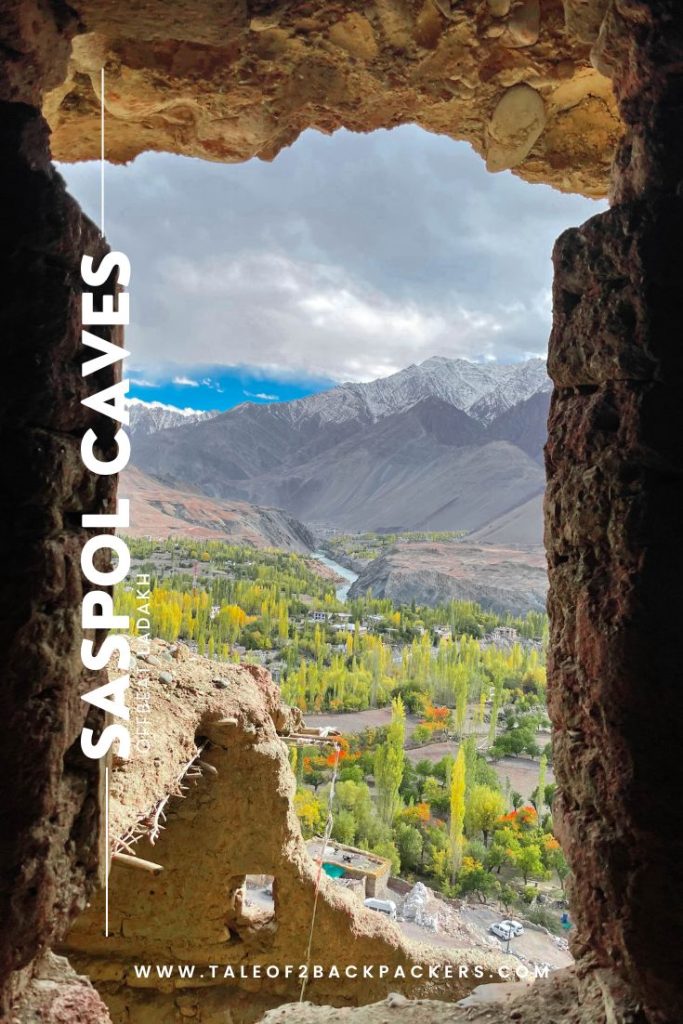
The caves carved into the hill of a conglomerate rock, have wall paintings that depict the different manifestations of Buddha. The paintings carry an esoteric value and are valuable to understand the history of Buddhism and Buddhist beliefs practices in the region during that time.
Cave 2

Not all the temples are easy to enter. However, the main temple (also known as Cave 2) has easier access. The cave can be identified by its orange-coloured exterior. This cave also has a door attached to it. If the door is closed, you can obtain the keys from a house located below the caves.

Cave 2 is also the most richly decorated cave. As we entered the cave, it literally took my breath away. It took a few moments for our eyes to get adjusted. There was enough light coming from the doorway that allowed us to see around the caves without the use of flashlights.

And what a scene awaited us! The interior of the cave was simple without any pillar or supporting columns as found in caves of Central and Southern India. The walls were plastered with clay and covered with vibrant paintings. There were larger panels surrounded by smaller panels of Buddhist pantheons and deities.

The colours were vibrant, the details were just amazing. Some of the paintings simply took my breath away. After witnessing the murals and paintings of Mangue Monastery, the art of Saspol caves simply left us speechless.
Other Caves
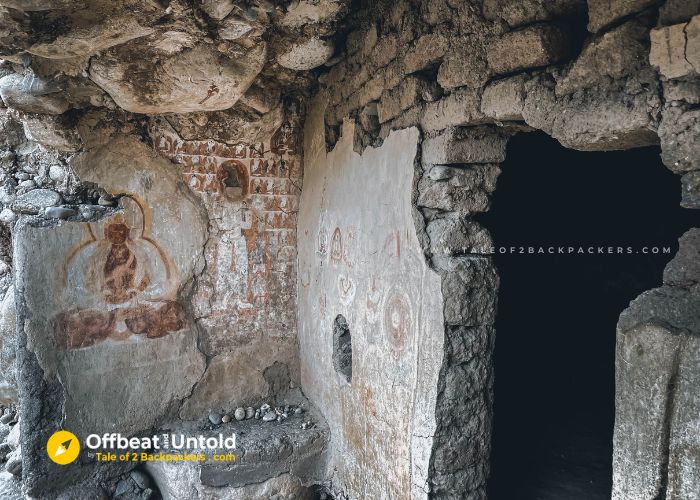
We left this cave to look out for the other caves. There was another cave which one has to enter through a makeshift plank. I manoeuvred myself, took careful steps and reached inside the cave. It also had some very beautiful paintings like the previous one. However, most of the paintings are bleached out in this cave.
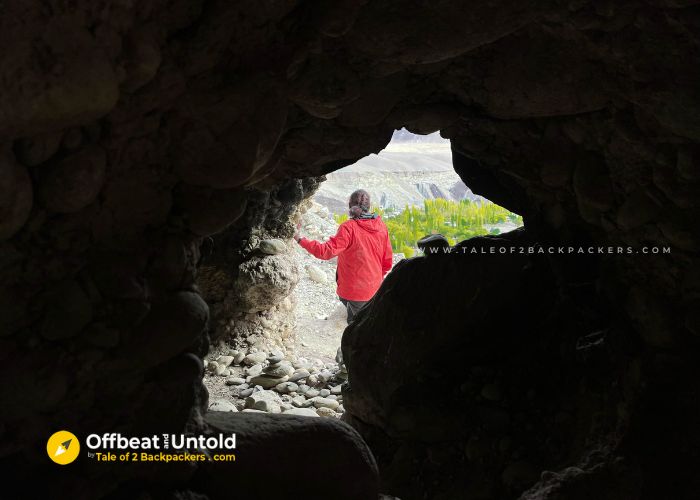
Just above the caves, there is an ancient ruin of a ninth-century fort. We did not hike up there as time was short, but I do wish to visit there the next time I get a chance. The fort houses an altar that is used by the locals of Saspol village.
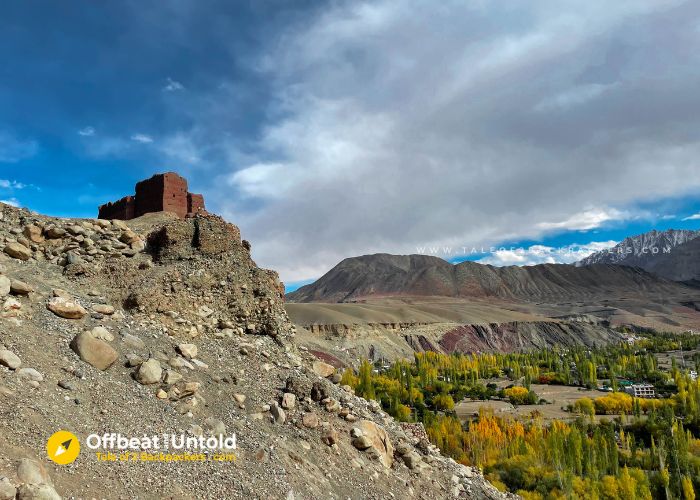
I came out of the caves with a stunned expression. As I looked at the beautiful views in front of me, I also kept wondering that long ago there were some people on earth who painstakingly created this wonderful art in this remote place.

Problems and Risks faced by the Saspol Caves
It is obvious that the Saspol caves are in a delicate state. One of the major problems faced by these caves is the weathering of the soft conglomerate rocks on which the caves are based. Erosion has already damaged the painted surface of the walls and consequently the structural stability of the caves. Only 2 caves are accessible now because of the collapsing of rocks. The plasters in many places are fractured and in some places the images have faded. All these factors put the sacred art and heritage to a great risk.

Works for the conservation of the caves and the paintings were initiated by the Indian National Trust for Art and Cultural Heritage (INTACH) Ladakh Chapter in 2015. Conservation work was carried out inside the two main caves. But much more needs to be done if we want to preserve the Saspol caves.
How to reach Saspol Caves?
You can hire a car from Leh to reach Saspol Caves. The trip can be done as a part of a day trip to Sham Valley.
Wall Paintings in the Main Cave at Saspol
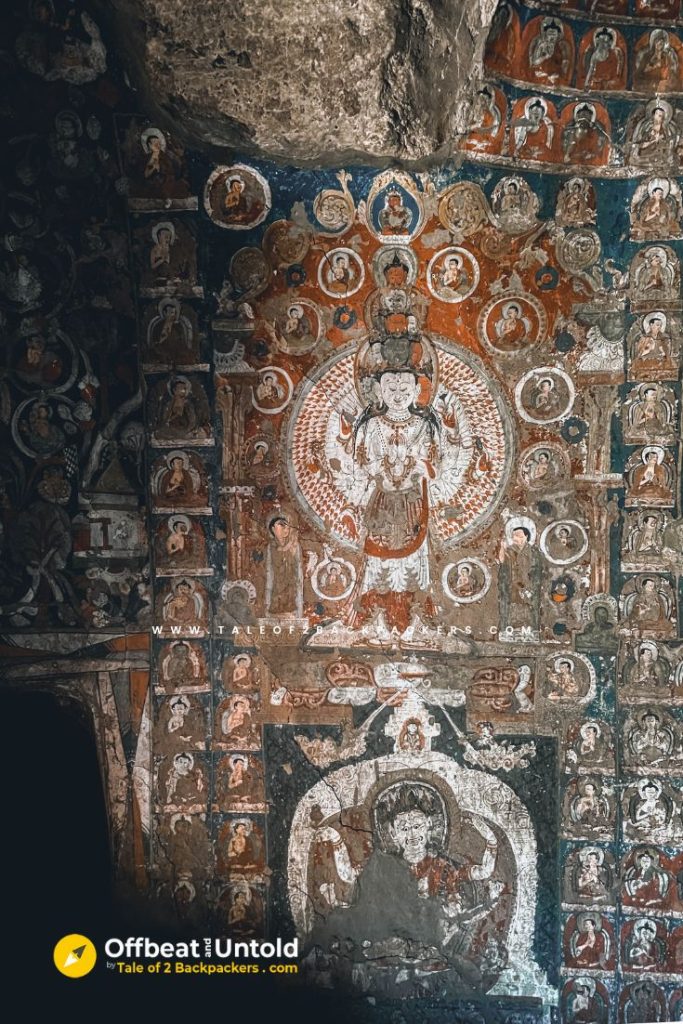


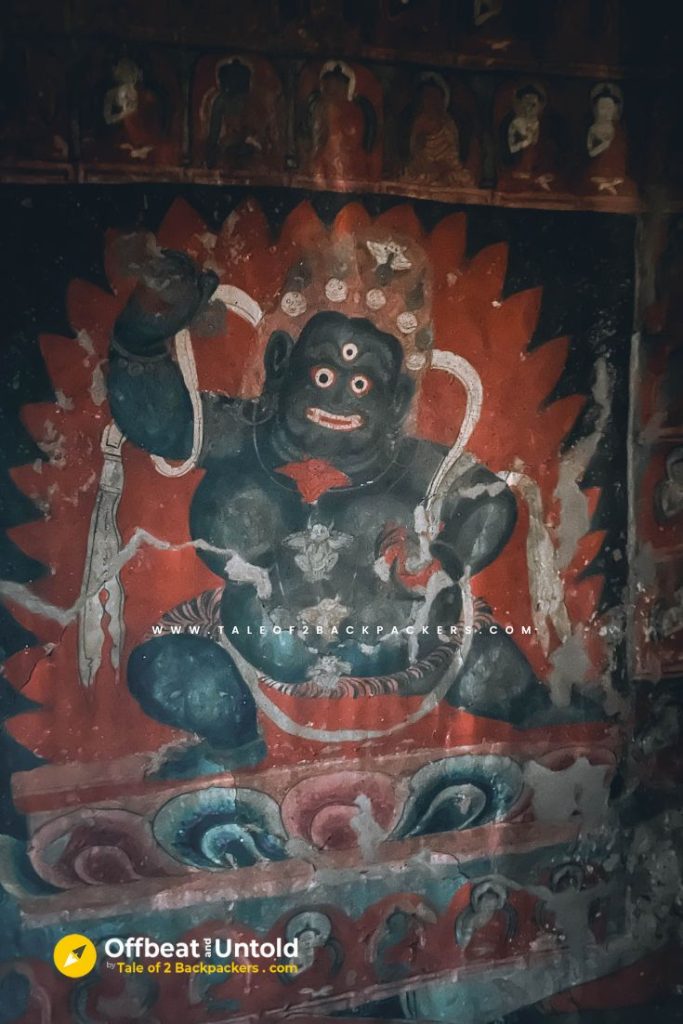

















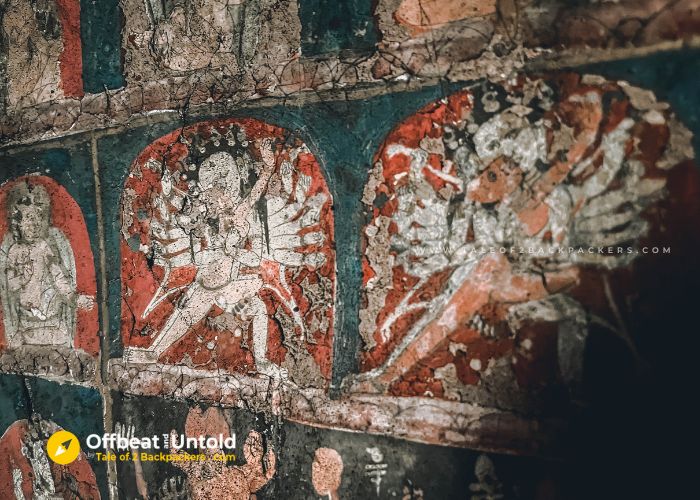
Wall Paintings in the other Cave at Saspol Caves



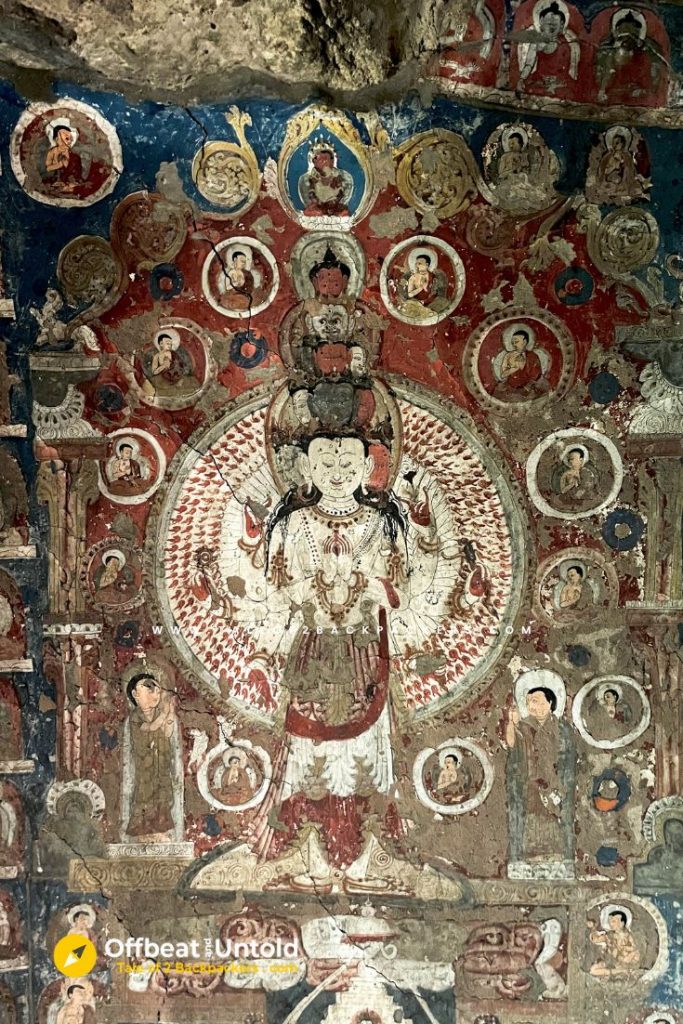
In Conclusion
Conservation efforts might generate an interest among the tourists. It can work the other way round as well. As tourism is gaining interest in the region, the number of visitors are increasing. This might urge the stakeholders to create a proper conservation effort in the region.

To all those who plan to visit the place, I request you to treat the place with utmost care and respect. Please do not touch the paintings or write anything on the walls (Yes, I saw a few scribblings on a wall). Please do not use flash for photography. Instead carry a tripod if you want to take good pictures. Losing such an artwork will be like losing a part of our heritage and culture.
Explore the caves, enjoy the wonderful views of the valley from the top and leave the place as you found it.
Hope you liked the post and the photographs. Please let us know your thoughts in comments below. If you liked the post and found it useful, please share it with your family, friends and neighbours.
Pin it for a later read!


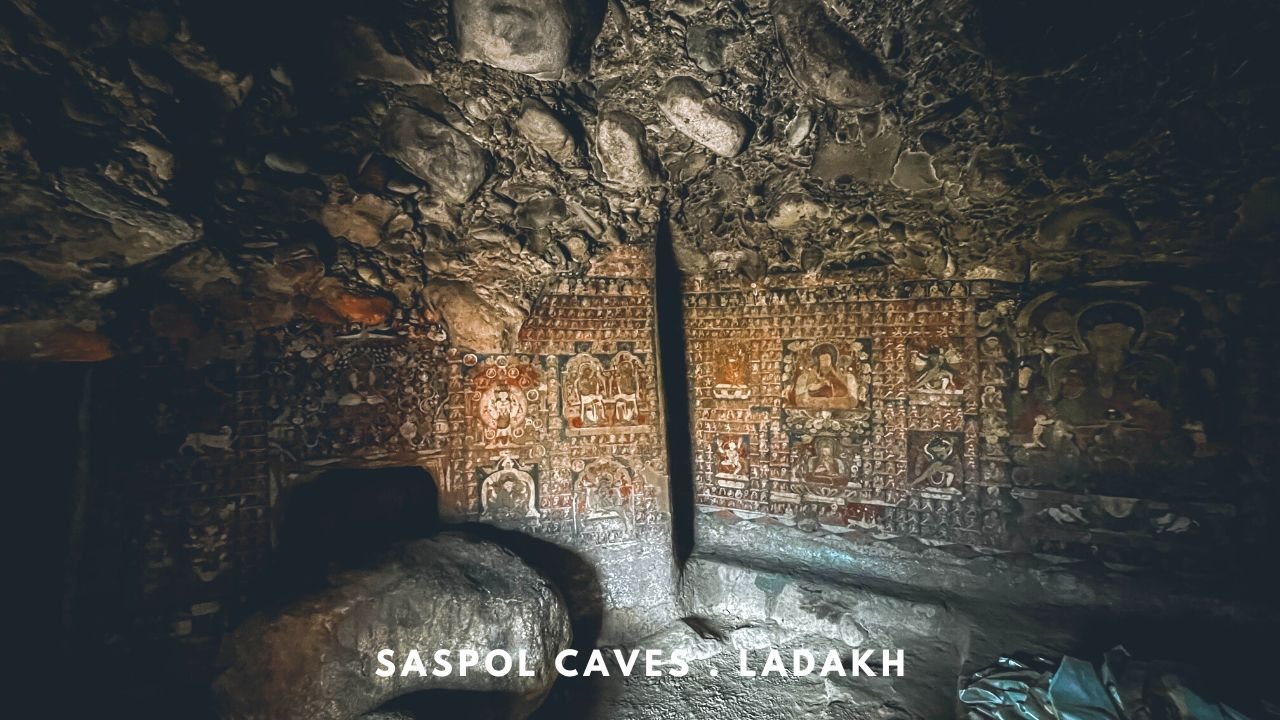

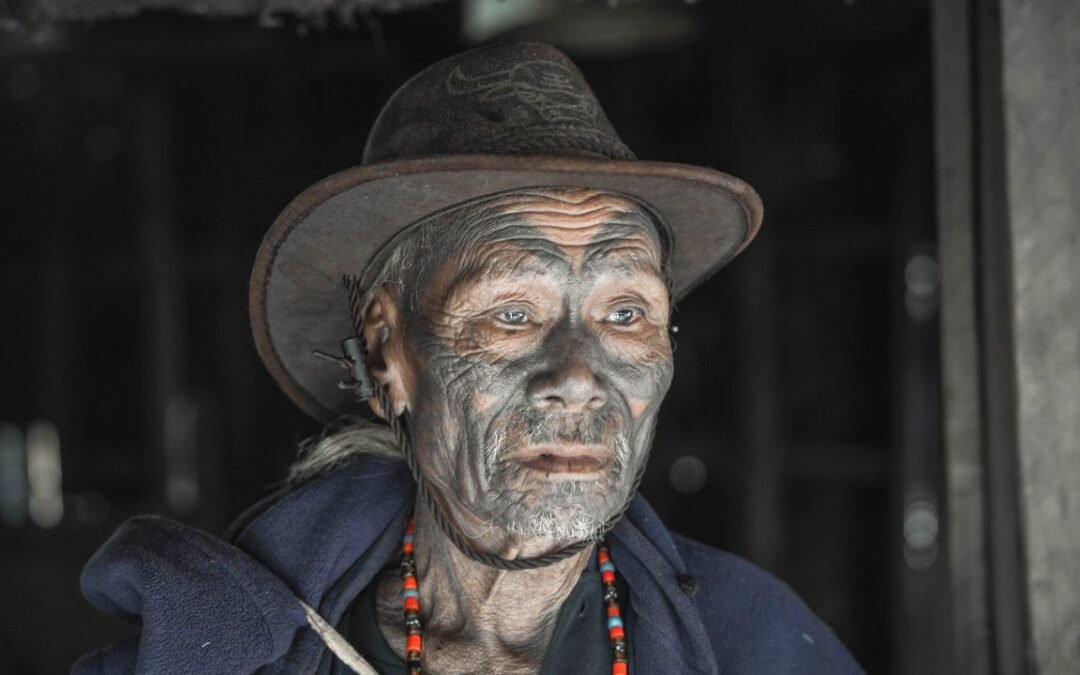
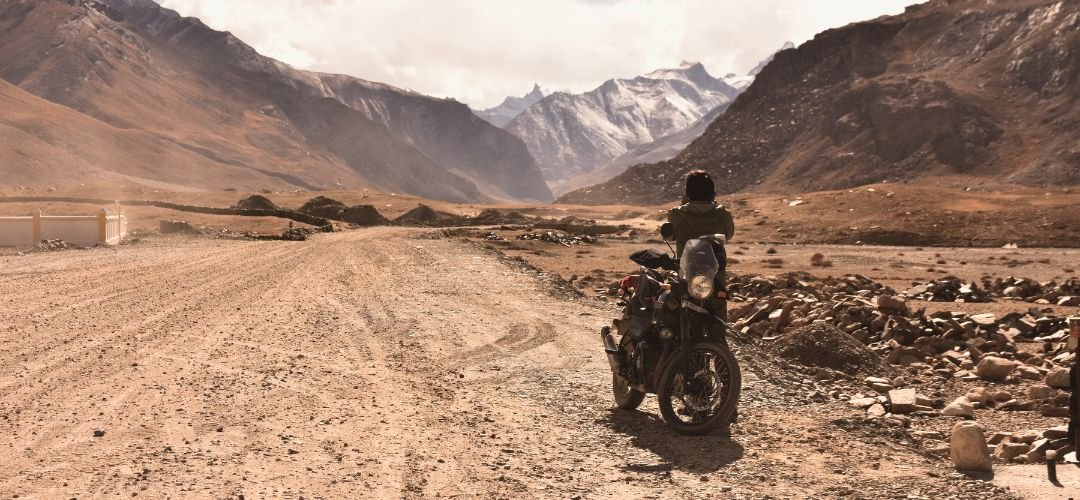
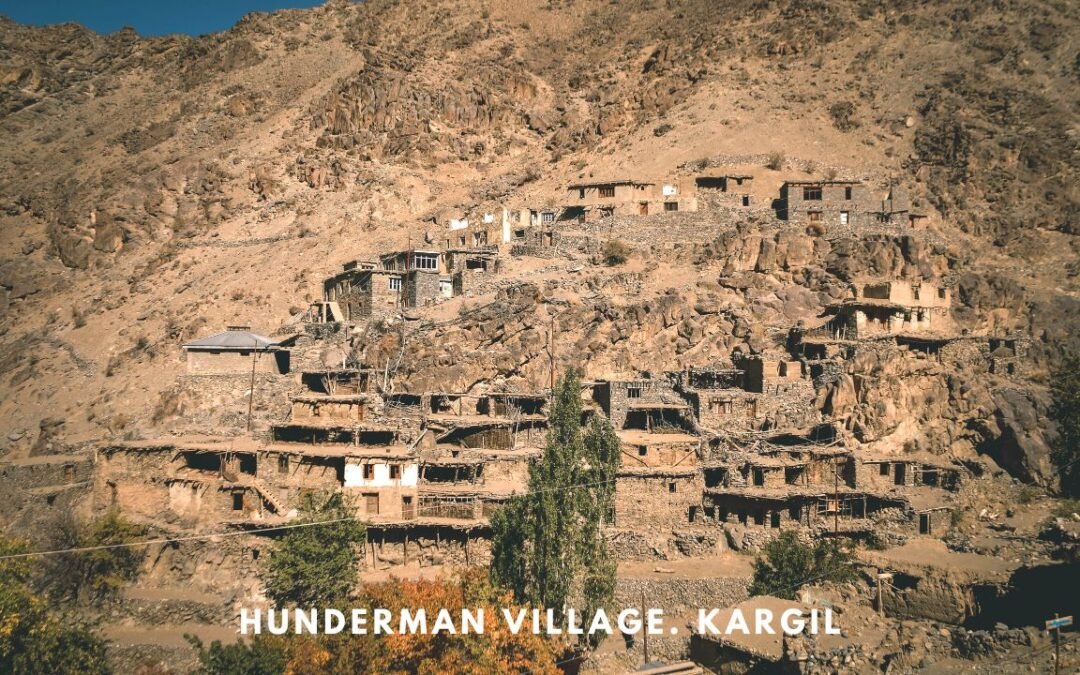
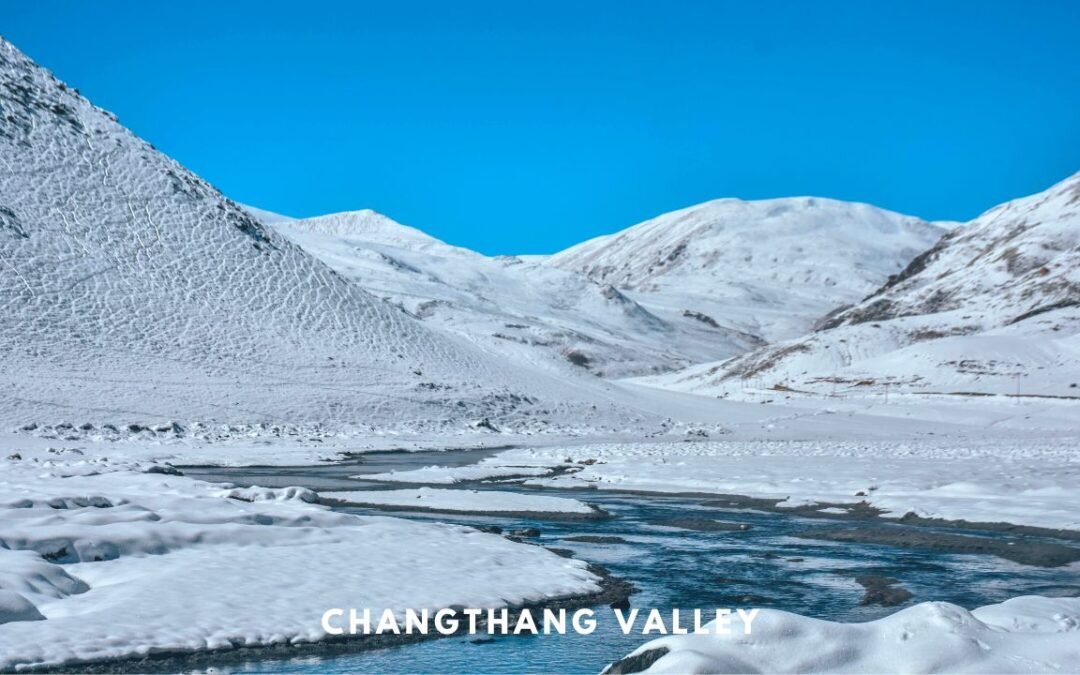
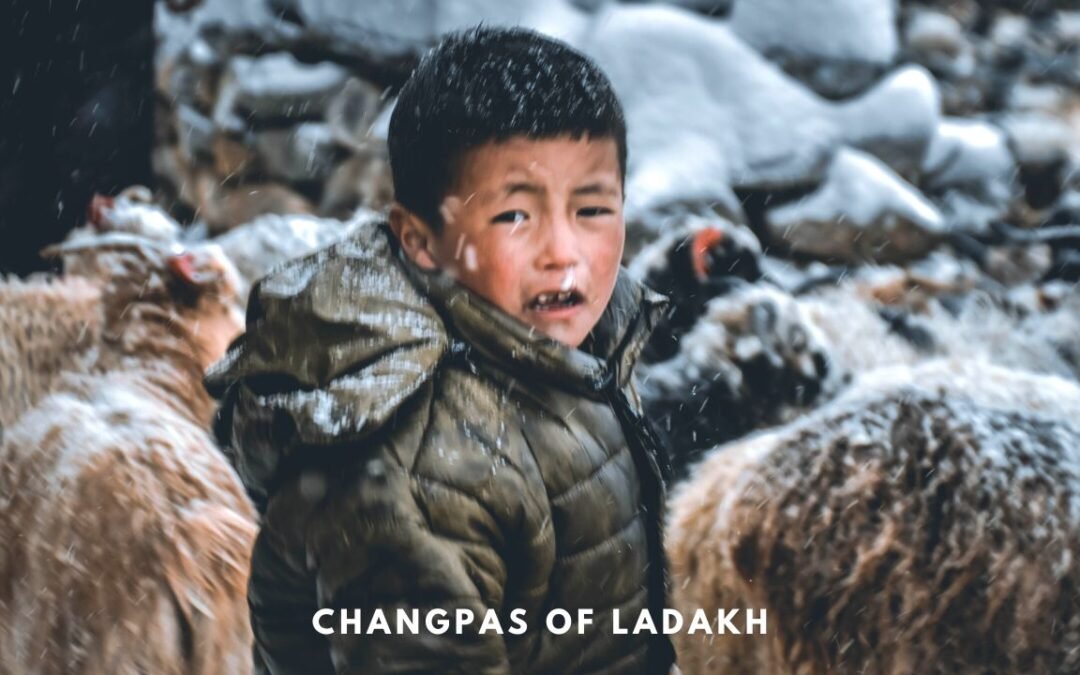



0 Comments